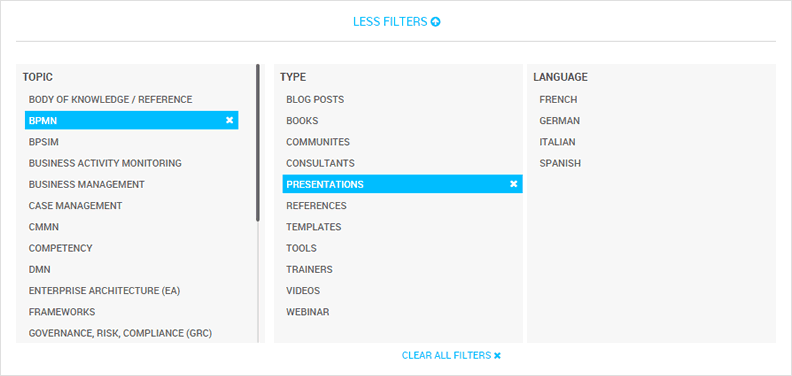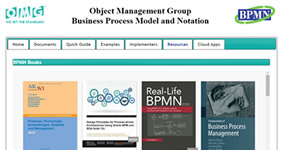Business Process Mapping
Blog: Flokzu
Diving into the realm of business process mapping can be a daunting venture without a reliable guide. With Flokzu at your side, this formidable task transforms into an engaging and efficient operation.
Flokzu, a trailblazer in this niche, provides a platform for creating detailed business process maps. These maps are crucial for dissecting complex workflows, identifying bottlenecks, and maximizing efficiency. With Flokzu, you get what is process mapping and shape your business’s future.
What is business process mapping?
In the world of business, it’s crucial to have a clear understanding of your organization’s processes to improve efficiency, reduce costs, and increase customer satisfaction. In the quest for success, companies can harness the power of process mapping to assess the performance of their operations with surgical precision and propel them to transformative heights.
By offering a bird’s eye view of the inner-workings of a company’s crucial operations, process mapping serves as a reliable and transformative tool to optimize the efficiency and proficiency of business functions. It involves creating a flowchart that details the inputs, outputs, and actions required at each stage of the process. The purpose of business process mapping is to provide a clear and concise overview of how a process works, so it can be analyzed and improved.
The process of business process mapping typically involves several steps. Firstly, you’ll need to identify the process you want to map. From addressing customer inquiries to conceptualizing and actualizing groundbreaking products or services, process mapping streamlines virtually any undertaking within a corporate environment. Once you have identified the process, you will need to gather data on how the process works. This can involve observing the process in action, interviewing staff involved in the process, and reviewing any existing documentation.
Upon gathering all requisite information, the subsequent stage entails the formulation of a comprehensive process map which can function as a strategic roadmap for improving organizational operations. This will involve identifying the key steps in the process, the people or systems involved in each step, the inputs and outputs at each step, and the sequence of steps required to complete the process. This information is then organized into a visual diagram, such as a flowchart map or process map.
Relationship with Business Process Management
The synergy between business process management and mapping sketches a company’s blueprint, offering a well-defined pathway toward efficiency, creativity, and enhanced organizational structure.r convoluted areas and leverage this intel to reframe their strategies for increased efficiency and minimal waste. BPM aims to improve an organization’s overall performance by focusing on its business processes and continuously improving them over time. By mapping out business processes, organizations can gain a better understanding of how they work, where inefficiencies exist, and how they can be improved to achieve better results.
In conclusion, business process mapping is a valuable technique for any organization looking to improve its processes and achieve better results. By creating a visual representation of a process, you can identify areas for improvement and make changes that will have a positive impact on your organization’s performance. I encourage you to explore this technique further as part of your MBA studies and consider how it can be applied in your future business endeavors.
What are the goals of business process mapping?
Business process mapping has several goals that are aimed at improving the efficiency and effectiveness of an organization’s processes. Some of the key goals of business process mapping include:
- Identifying inefficiencies: One of the primary goals of business process mapping is to identify inefficiencies in a process. By charting the trajectory of a particular process, organizations can discern sluggish, repetitive, or convoluted areas and leverage this intel to reframe their strategies for increased efficiency and minimal waste.
- Improving quality: Another goal of business process mapping is to improve the quality of a process. By identifying each step in a process and the inputs and outputs at each step, you can identify areas where errors or defects are likely to occur. Utilizing the insights gained from this information, organizations can strategically modify their processes, curbing the incidence of errors and bolstering the quality of their overall output.
- Increasing customer satisfaction: Business process maps serve as invaluable tools for companies that seek to optimize their overall performance by identifying key areas of improvement and rectifying any shortcomings. By identifying the steps in a process that are directly related to customer interaction, such as order processing or customer service, you can make changes to these steps that will improve the customer experience. This ultimately leads to a boost in consumer devotion and recurring patronage.
- Reducing costs: Another goal of business process mapping is to reduce costs. By identifying inefficiencies in a process, you can make changes that will reduce the time and resources required to complete the process. This might lead to cost savings for the firm.
- Formalize knowledge, so as to move it from people’s minds to business process flow diagrams that can be shared with others. This management allows knowledge to flow through the organization, and thus be reviewed and improved. In addition, it reduces the risks of depending on a single person who has that knowledge, and who can leave the company taking it with him or her.
- Streamlining processes: Finally, business process mapping can be used to streamline processes. By identifying areas where the process is overly complex or redundant, you can make changes that will simplify the process and make it more efficient. This can result in faster processing times and a more streamlined workflow.
Knowledge management and process mapping
Knowledge management is closely related to business process mapping. One of the key benefits of process mapping is that it allows organizations to capture and formalize the knowledge and expertise that may be held by individuals within the organization. This knowledge can then be shared and disseminated more widely throughout the organization, enabling everyone to benefit from it.
By creating a visual representation of a process, business process mapping enables organizations to capture the knowledge and expertise that is often held in the minds of individuals who are involved in the process. This information can be documented in the process map and stored in a centralized location, making it easier for others to access and use.
The methodical documentation of knowledge using process mapping techniques facilitates the optimization of standardization and quality in any given procedure. By documenting the steps and interactions involved in a process, organizations can establish a standard approach that can be followed by everyone involved in the process. This can result in more consistent outcomes and better-quality output.
Essentially, the seamless integration of process mapping and knowledge management practices can drastically enhance a company’s overall efficiency and effectiveness. By capturing and formalizing the knowledge and expertise that exists within the organization, and making it accessible to everyone, organizations can improve efficiency, reduce errors, and achieve better results.
Unmapped processes as a barrier to innovation
Nonaka and Takeuchi (Japanese organizational theorists and thought leaders in the Knowledge management field), argued that knowledge that doesn’t flow through an organization can be a significant barrier to innovation and organizational learning. In their book “The Knowledge-Creating Company,” they proposed a model of organizational knowledge creation that emphasized the importance of knowledge sharing and collaboration.
As per the classifications provided by Nonaka and Takeuchi, there exist two primary forms of knowledge: explicit and tacit. Explicit knowledge is the kind of knowledge that can be easily codified and shared, such as facts, figures, and procedures. Tacit knowledge, on the other hand, is the kind of knowledge that is difficult to articulate and is often based on personal experience, intuition, and know-how.
Nonaka and Takeuchi argued that tacit knowledge is often the most valuable kind of knowledge, as it is often the source of innovation and competitive advantage. However, tacit knowledge is also the most difficult to share and transfer, as it is deeply rooted in the experiences and beliefs of individuals.
When you map a process, you are converting people’s tacit knowledge about how that process works into explicit knowledge that will persist and can be shared with others to improve this business process.
Nonaka and Takeuchi argued that organizations must create processes and structures that facilitate the sharing and transfer of tacit knowledge, as well as explicit knowledge. They proposed a model of knowledge creation that emphasized the importance of socialization, externalization, combination, and internalization. Externalization involves the codification of tacit knowledge into explicit knowledge that can be shared more widely. This is basically what the mapping of a process does.
What are the different types of business process maps?
Numerous varieties of business process diagrams exist for visually illustrating distinct business operations. These graphical representations offer a transparent and concise procedure summary, enabling companies to detect inadequacies and pinpoint potential enhancements. A few of the more general business process diagram categories include:
- Flowchart: A flowchart represents a unique category of diagrams that delineate the systematic progression of actions within a specified process, showcasing the chronological order of their execution. It uses symbols and arrows to represent each step in the process and the relationship between each step. Flowcharts are particularly useful for mapping out complex processes with multiple decision points.
- Swimlane diagram: This specialized flowchart innovatively employs lanes or columns to represent various departments or individuals actively participating in a streamlined process. This type of diagram is useful for mapping out processes that involve multiple stakeholders and handoffs between departments.
- Value stream map: A value stream map distinguishes itself as a specialized process map, honing in on the value flow throughout a procedure, commencing with the customer’s initial demand and culminating in the ultimate product or service delivery. It helps organizations identify areas of waste and inefficiency in the process and provides a clear understanding of how value is added at each step.
- Business process model and notation (BPMN) diagram: A type of process map that uses standardized symbols to represent each step in a process. It provides a common language for process mapping, making it easier to share and understand process maps across different departments and organizations.
- Data flow diagram: Reengineering initiatives are facilitated through process mapping, allowing organizations to effectively reassess and realign their operational procedures to best suit their objectives. It shows how data is collected, processed, and stored at each step in the process and helps identify areas where data may be lost or duplicated.
BPMN as the worldwide standard for process maps
Between the previous alternatives, BPMN (Business Process Model and Notation) has become the most widespread and adopted process mapping notation because of several reasons:
- Standardization: BPMN is an internationally recognized standard for process modeling and is maintained by the Object Management Group (OMG). The standardization of BPMN makes it easier for different organizations and departments to communicate and understand process maps, reducing the potential for misinterpretation and confusion.
- Flexibility: BPMN offers a wide range of symbols and elements that can be used to represent different types of processes and activities. This flexibility allows organizations to create detailed and comprehensive process maps that capture all aspects of a process.
- Integration: BPMN can be easily integrated with other process management tools, such as the workflow engine in Flokzu BPM Suite. This integration allows organizations to automate processes and track process performance, improving efficiency and reducing errors.
- Execution: BPMN allows the process engine to interpret the BPMN diagram directly, without requiring transformations. This ensures that the business mapping process to be executed by Flokzu’s process engine is exactly the one that is modeled. As a corollary, deployment times are reduced (from modeling to automation) and therefore the associated costs.
- Ease of Use:BPMN serves as an ideal tool for simplifying complex operational concepts, making it easily comprehensible to users lacking intricate technical know-how. The standardization of BPMN symbols and notation means that anyone can create and interpret process maps, making it an accessible tool for all levels of an organization.
- Adoption: The widespread adoption of BPMN by both software vendors and organizations has made it the de facto standard for process modeling. This adoption has led to a wealth of resources and tools available for BPMN users, making it easier to learn and use.
The standardization, flexibility, integration, ease of use and widespread adoption of BPMN have made it the most popular process mapping notation. Its adoption by a large number of organizations and software vendors has also helped to establish it as a common language for process modeling, making it easier for different organizations to collaborate and share process maps.

Using other or proprietary notations for process mapping
Proprietary notations can be difficult to understand for those who are not familiar with them, and they may not be compatible with other tools or systems used within an organization.
By using a standard notation, organizations can ensure that their process maps are easily understood and can be shared across departments and organizations. This can lead to better alignment and collaboration, as well as improved efficiency and effectiveness in the execution of processes.
Flokzu BPM Suite is capable of interpreting and running processes in BPMN. This means that users can create process maps in BPMN notation and upload them to Flokzu, where they can be executed and managed within the software. This is not possible with other less common or proprietary notations. This capability ensures that Flokzu users can take full advantage of the benefits of BPMN, including the standardization, flexibility, and ease of use that it provides.
The following illustration shows a process modeled in a proprietary, non-standard notation. And next to it, a process modeled in standard BPMN notation. Unless the reader is familiar with the notation on the left, the ease of using a standard notation is obvious. And this ease naturally boils down to needing less time to understand the process, speeding up its improvement and reducing the associated costs.

Benefits and challenges of business process mapping
Let’s see the benefits first. The following are some of the primary advantages of mapping a business process:
- Improved efficiency: Mapping organizational procedures enables the pinpointing of operational bottlenecks, thereby fostering a more streamlined and efficient working environment. By visualizing each step in a process, organizations can identify bottlenecks, redundancies, and other areas that are slowing down the process. This knowledge can subsequently be harnessed for optimizing productive capacity and minimizing superfluous expenditure.
- Better quality: Mapping a business process can also improve the quality of the output. By identifying each step in a process and the inputs and outputs at each step, organizations can identify areas where errors or defects are likely to occur. Employing this data facilitates the implementation of modifications that diminish inaccuracies and enhance the general excellence of the resultant product.
- Improved customer satisfaction: Mapping a business process can also help to grow client’s satisfaction. By identifying the steps in a process that are directly related to customer interaction, such as order processing or customer service, organizations can make changes to these steps that will improve the customer experience. As a result, consumer loyalty and repeat business may rise.
- Reduced costs: Mapping a business process can also help to reduce costs. By identifying inefficiencies in a process, organizations can make changes that reduce the time and resources required to complete the process. Achieving organizational cost reductions can be a potential outcome of this strategy.
- Better control: Finally, Charting a corporate procedure enables enterprises to achieve enhanced governance of their workflows. Through the illustration of every phase within a process, companies can develop a uniform methodology that can be adhered to by all participants within the operation. This can result in more consistent outcomes and better control over the process.
Naturally, a discipline that involves both people and their work with the processes that rule the operation of the organization also presents relevant challenges:
- Change management: One of the biggest challenges when mapping a business process is managing the change that may result from the process mapping exercise. Process mapping can reveal areas where changes are needed to improve efficiency, quality, or customer satisfaction. However, implementing these changes can be difficult and may require changes to organizational structures, roles, and responsibilities. Hence, successful transformation management is vital for harnessing the advantages of process visualization.
- Technical difficulties: Another challenge when mapping a business process is the technical complexity involved in the process mapping exercise. Depending on the software or tools used, organizations may need to invest in new technology or upgrade their existing technology to support the process mapping exercise. This can be costly and time-consuming.
- Standards adoption: Adopting a standard notation, such as BPMN, can be a challenge for organizations that have existing proprietary notations. In order to guarantee that staff members can proficiently comprehend the notation and develop process maps, specialized training and education might be necessitated. Using a BPMN process engine such as the one in Flokzu is key to automate the process once modeled.
- Incomplete or inaccurate data: For process mapping to deliver optimal results, it fundamentally hinges on the accuracy and comprehensiveness of the underlying data. If data process mapping is missing or inaccurate, the resulting process maps may not accurately reflect the actual process. Ensuring that data is complete and accurate can be a challenge, particularly in complex or fragmented organizations.
- Lack of stakeholder buy-in: Finally, Process mapping entails the collaboration of numerous stakeholders throughout the organization, necessitating the integration of diverse perspectives and expertise. If stakeholders are not engaged or do not see the value in the process mapping exercise, it can be difficult to create accurate and effective process maps. Ensuring that stakeholders are involved and engaged throughout the process mapping exercise is critical to its success.
A no-code BPM suite like Flokzu, can help to address the challenges associated with mapping a business process by providing a user-friendly, collaborative environment that makes it easier to manage change, adopt standards, and ensure data accuracy. By using a no-code BPM suite, organizations can streamline the process mapping exercise and ensure that the benefits of process mapping are realized.
How to create a business process map?
Designing a business process map requires an in-depth grasp of the operation you seek to depict visually. Following a systematic approach helps. Let’s explore this process, focusing on a three-tiered system – Level 1, Level 2, and Level 3 process maps.
Level 1 Process Map
Start with a broad overview of the process. This map outlines the significant steps in the process, typically beginning with the start trigger and ending with the finished outcome. It gives a general idea of the process flow, which is helpful for senior management or individuals new to the process.
Level 2 Process Map
Next, delve deeper into the details with a Level 2 process map. This stage involves breaking down the major steps from Level 1 into more granular activities. It provides a more detailed view of the process and is particularly useful for team leads or supervisors.
Level 3 Process Map
Lastly is the most detailed, breaking down each activity into specific tasks. It represents the process at the operational level, catering to the needs of frontline employees who perform the tasks.
With these maps, you create a holistic view of the process at different levels of granularity. Remember, your maps should reflect a clear start and finish point for clarity.
Business process mapping examples
When it comes to business process mapping, visualizing the steps that make up a procedure is crucial for understanding, analyzing, and eventually improving that process. For novices and seasoned professionals, examples of process maps can provide insightful guidance and reveal innovative approaches.
The process mapping example: customer service request
Imagine a standard customer service request process. It begins with a customer raising a request, which is then logged into the system. Next, the request is assessed by the customer service team, who determines the appropriate course of action.
Creating a process map adds clarity and coherence to this sequence of events. We define the roles, inputs, outputs, and decision points at each step, ensuring no ambiguities exist. The process map is a flowchart using symbols to represent different stages.
The example of a process map for this situation visually represents these steps. Its distinctive user-friendly interface enables stakeholders to comprehend the process quickly, fostering improved efficiency and effectiveness.
History of business process mapping
To appreciate the whole history of process flow map, one must delve deeper into the roots of its origins and development over the centuries.
While early forms of process mapping have been utilized in some form throughout human history, it was during the Industrial Revolution that process mapping as we know it began to emerge. During this period, businesses began recognizing the need for systematic ways to document, analyze, and improve their work processes.
In the early 1900s, Frank and Lillian Gilbreth significantly contributed to this budding field. Their work in time and motion studies led to the development of the first known business process flow chart. These flow charts used symbols to represent different process steps, laying the foundation for modern process mapping.
Following the Gilbreths, another notable contribution came from Henry Gantt, who introduced the Gantt chart in the 1910s. This visualization tool, primarily used for project management, influenced process mapping by highlighting the value of displaying processes over time.
By the mid-20th century, business process mapping was firmly established as an essential business tool. It further evolved with the advent of computer technology in the 1960s and 70s, leading to the development of more advanced process mapping software.
In the late 20th century, companies like IBM focused on creating comprehensive Business Process Management (BPM) systems, integrating process mapping into broader workflows. This paved the way for modern, sophisticated process mapping tools.
Fast-forward to the 21st century, and we see an evolution in the technology and sophistication of process mapping tools. Nowadays, digital solutions dominate the landscape, with one shining example being the Flokzu platform.
How to do mapping with Flokzu?
As a strategic methodology, business process mapping serves as an invaluable asset for organizations, allowing them to detect procedural inefficiencies and potential sectors needing enhancement. By visually representing a process, organizations can identify bottlenecks, redundancies, and areas where errors or defects may occur. This information can then be used to make changes that improve efficiency, quality, customer satisfaction, reduce costs, and gain better control over processes.
However, mapping a business process can present several challenges, including change management, technical difficulties, standards adoption, incomplete or inaccurate data, and lack of stakeholder buy-in. To address these challenges, organizations can use a no-code BPM suite like Flokzu, which provides a user-friendly, collaborative environment that makes it easier to manage change, adopt standards, ensure data accuracy, and increase stakeholder buy-in. A no-code BPM suite can help to streamline the process mapping exercise and ensure that the benefits of process mapping are realized.
FAQs
What is business process mapping?
Business process mapping is a strategic method utilized by organizations to illustrate the sequential steps involved in a specific procedure or activity. It employs a collection of designated symbols to represent tasks, decisions, and work process flow from commencement to completion. The primary objective of this tool is to provide a clear understanding, facilitate analysis, detect inefficiencies, and foster continuous improvement in organizational processes.
Why is business process mapping important?
Business process mapping, a specialty of a process map corporation, is essential for multiple reasons. It visualized the step-by-step flow of business operations, promoting clarity and shared understanding within the organization. This clear insight helps identify inefficiencies, bottlenecks, and waste areas that may otherwise go unnoticed. Additionally, it fosters consistency, standardization, and enhanced training efforts. Ultimately, business process mapping aids in making strategic decisions for process improvements, driving operational efficiency, and facilitating growth.
What are the benefits of business process mapping?
It provides several advantages. It promotes clarity and shared understanding by visually representing the workflow, making complex processes easier to comprehend. It enables organizations to identify inefficiencies, bottlenecks, or redundancies, thus paving the way for process optimization. It supports the standardization of procedures, leading to consistency and quality assurance. These maps also serve as valuable training materials for new staff, ensuring they quickly understand the workflow.
How do you create a business process map?
Creating a business process map begins with defining the process and identifying its start and endpoints. Next, gather detailed information about each step, including the tasks and their sequence. Use symbols to represent these steps and decisions. Lay them out sequentially to create a business process diagram example. After completing the initial draft, review and refine it with input from team members involved in the process. Finally, validate and approve the map before sharing it with the wider organization for implementation and training.
The post Business Process Mapping appeared first on Flokzu.
Leave a Comment
You must be logged in to post a comment.







